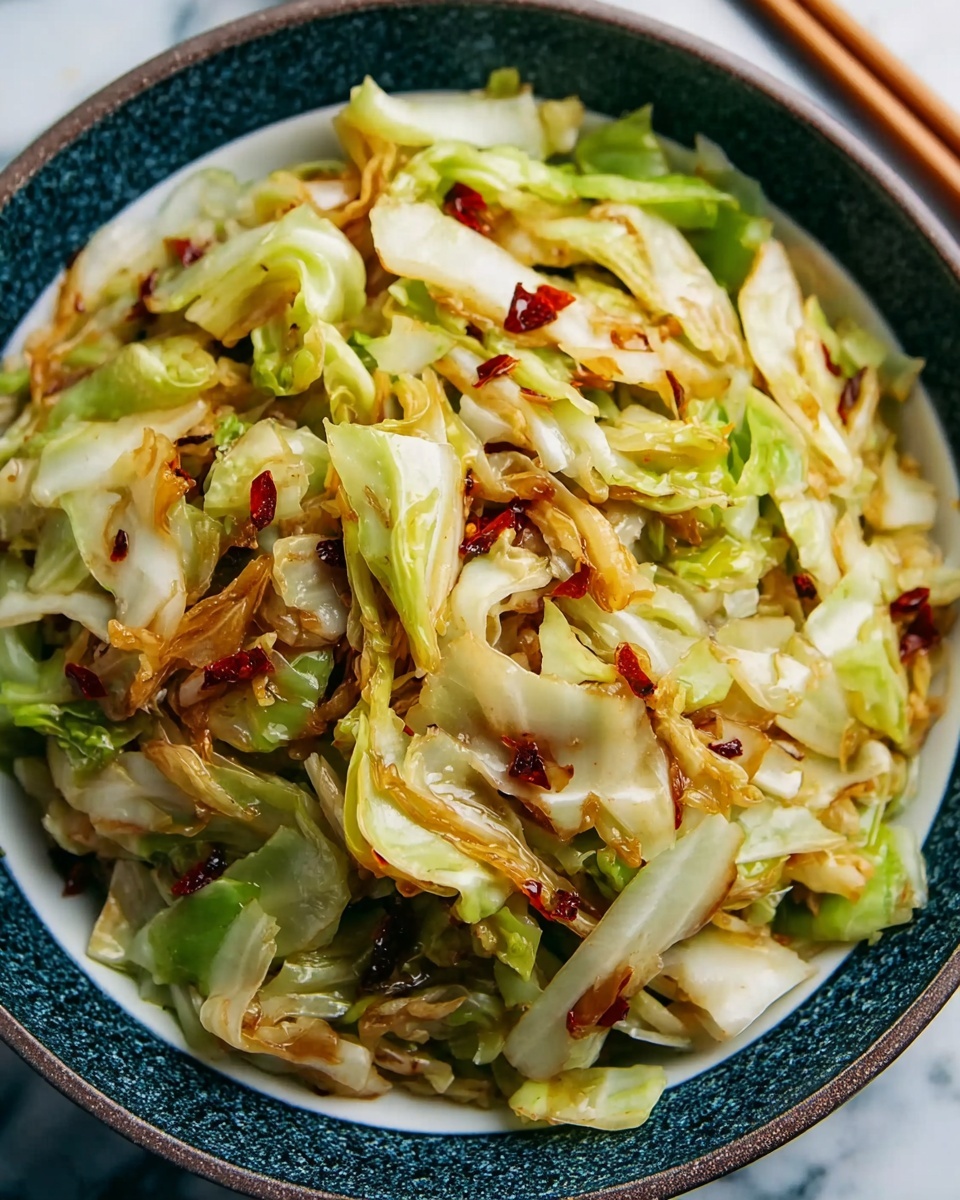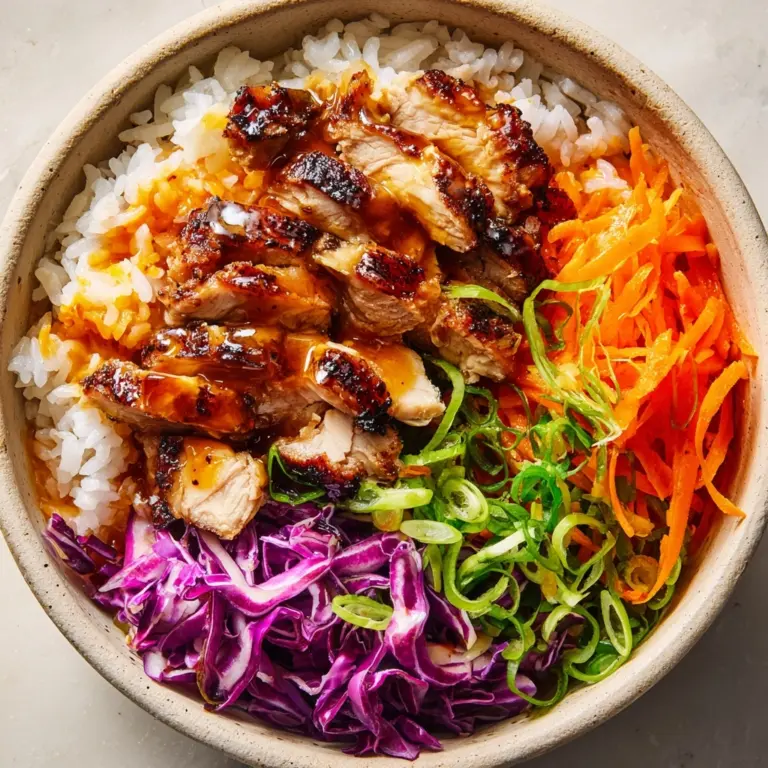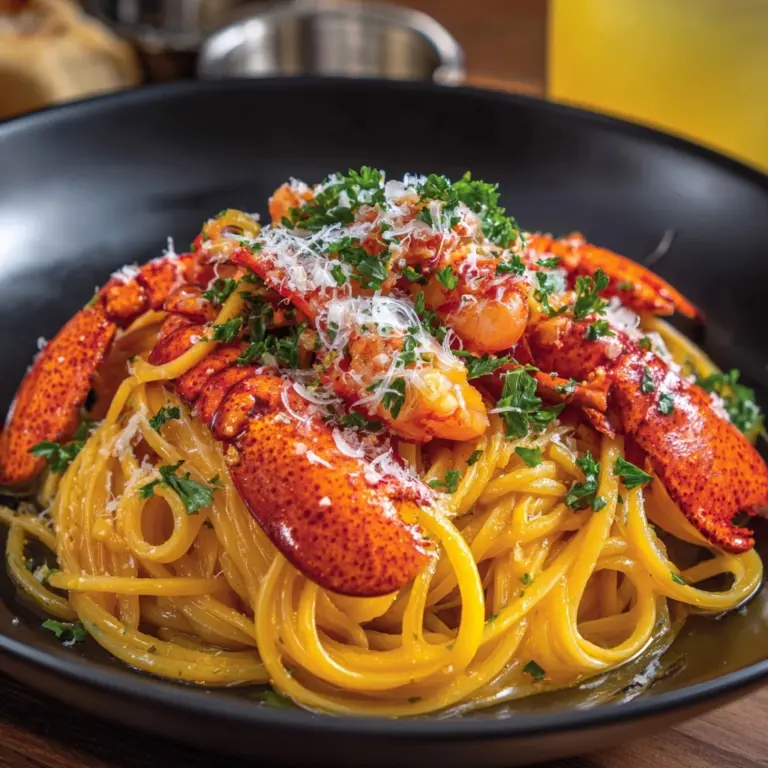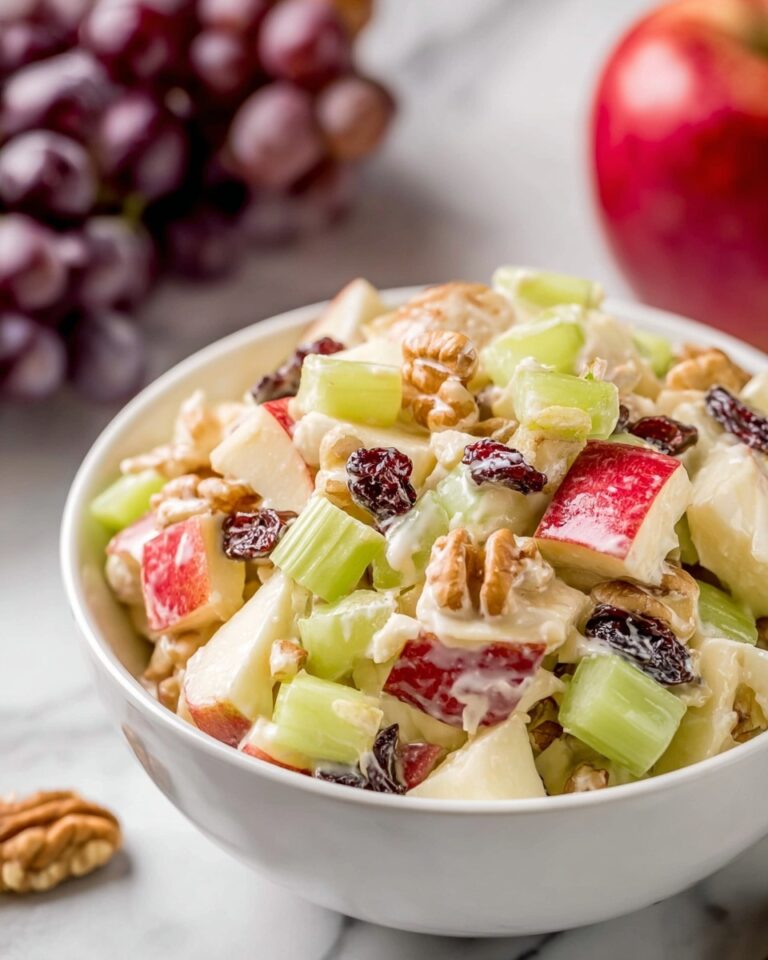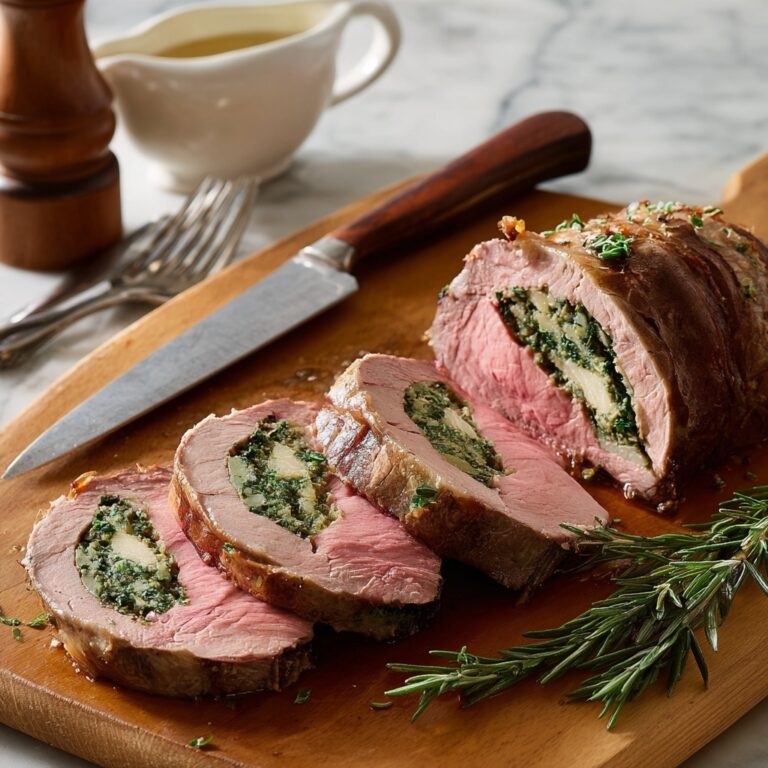If you’ve been searching for a vibrant, comfort-filled dish that’s as quick to prepare as it is bursting with flavor, look no further than Chinese Hot and Sour Cabbage: A Quick Flavor-Packed Delight Recipe. This dish is a celebration of bold tastes—the tangy punch of black vinegar, the fiery kick from spicy bean sauce, all wrapped up in tender, crunchy cabbage. It’s a perfect weeknight meal that effortlessly balances heat and sour notes, delivering a satisfying punch without demanding hours in the kitchen. Trust me, once you try this, it will quickly become one of your favorite go-to dishes to brighten up any dinner table.
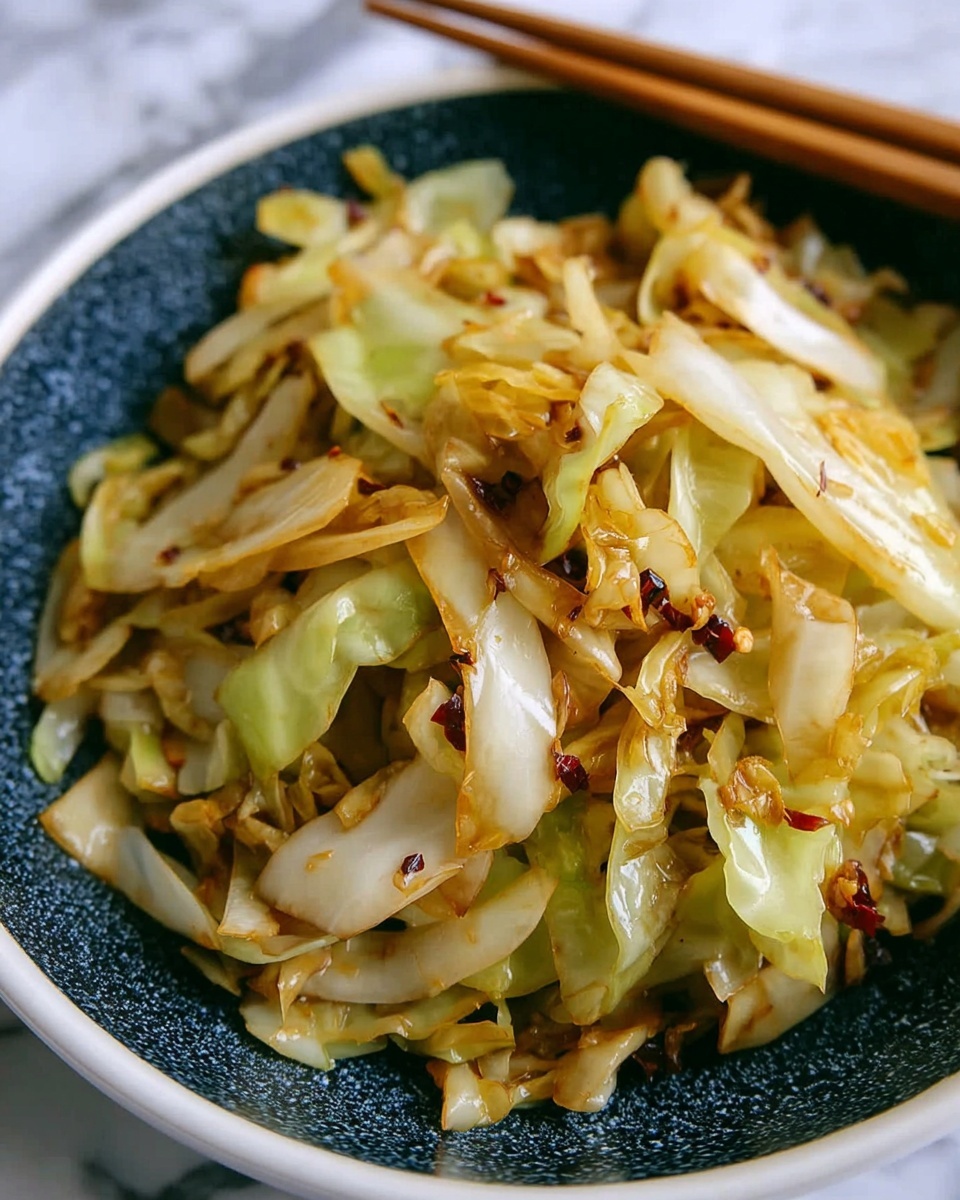
Ingredients You’ll Need
What’s truly wonderful about this recipe is how simple yet essential each ingredient is. Every element is thoughtfully chosen to build layers of flavor, texture, and color, transforming humble cabbage into a star dish that dazzles your taste buds.
- Neutral Oil: 2 tablespoons, to sauté without overpowering the delicate flavors.
- Garlic: 4 cloves, finely chopped for that irresistible aromatic base.
- Doubanjiang (Spicy Bean Sauce): 2 tablespoons, crucial for authentic heat and umami depth.
- Taiwanese Cabbage: 1 head, but you can also use green, savoy, or napa cabbage to keep the crunch and absorb the sauce.
- Chinese Black Vinegar: 2 tablespoons, provides a rich, tangy brightness—rice vinegar works as a milder alternative.
- Soy Sauce: 2 tablespoons, enhances the savory backbone; tamari is a great gluten-free option.
- Sesame Oil: 1 tablespoon, for that lovely, nutty finish that makes this dish unforgettable.
- White Pepper: 1 teaspoon, offering a subtle warmth—black pepper can be used if you don’t have white pepper handy.
- Sugar: 1 teaspoon, balances acid and spice, but feel free to omit or replace with a sweetener of your choice.
- Water: 1/4 cup, to steam the cabbage gently and keep it tender yet crisp.
- Cornstarch: 1 tablespoon, mixed with water to form a slurry that thickens the sauce beautifully.
- Cooked Rice: 2 cups, the perfect hearty base for soaking up the delicious sauce.
- Chopped Green Onions: 1/4 cup, adds the freshest pop of color and aroma when sprinkled on top.
How to Make Chinese Hot and Sour Cabbage: A Quick Flavor-Packed Delight Recipe
Step 1: Prepare the Cabbage
Start by washing your cabbage thoroughly, then cut it into bite-sized pieces that will cook quickly but still retain some crunch. A good chop here ensures each bite carries the perfect balance of softness with a slight snap, which is essential for a satisfying texture.
Step 2: Sauté Garlic and Doubanjiang
Heat the neutral oil in a large wok or skillet over medium heat. Toss in the finely chopped garlic and cook until fragrant—be careful not to burn it, as it can turn bitter. Next, stir in the Doubanjiang, letting the spicy bean sauce gently sizzle to release its complex aroma and infuse the oil. This step is where the magic really begins.
Step 3: Cook the Cabbage
Add the cabbage to the pan, stirring gently to coat it evenly with the garlic and bean paste mixture. Pour in the water, which will create steam and help soften the cabbage without turning it mushy. Cover the pan and let it cook for about 5 minutes, checking to ensure your cabbage stays vibrant and crisp-tender.
Step 4: Add Flavorings and Thicken
Now it’s time to build layers of flavor—pour in the Chinese black vinegar and soy sauce, and sprinkle the white pepper and sugar over the top. Stir everything together, then drizzle in the sesame oil for that toasty finish. To thicken the sauce, stir your cornstarch slurry once again and pour it into the pan, cooking for another minute until you see the sauce beautifully coat every tender leaf.
Step 5: Final Touches
Remove the dish from heat and sprinkle chopped green onions on top for a fresh, vibrant contrast. This simple step adds a burst of color and a hint of sharpness that lifts the entire dish.
How to Serve Chinese Hot and Sour Cabbage: A Quick Flavor-Packed Delight Recipe
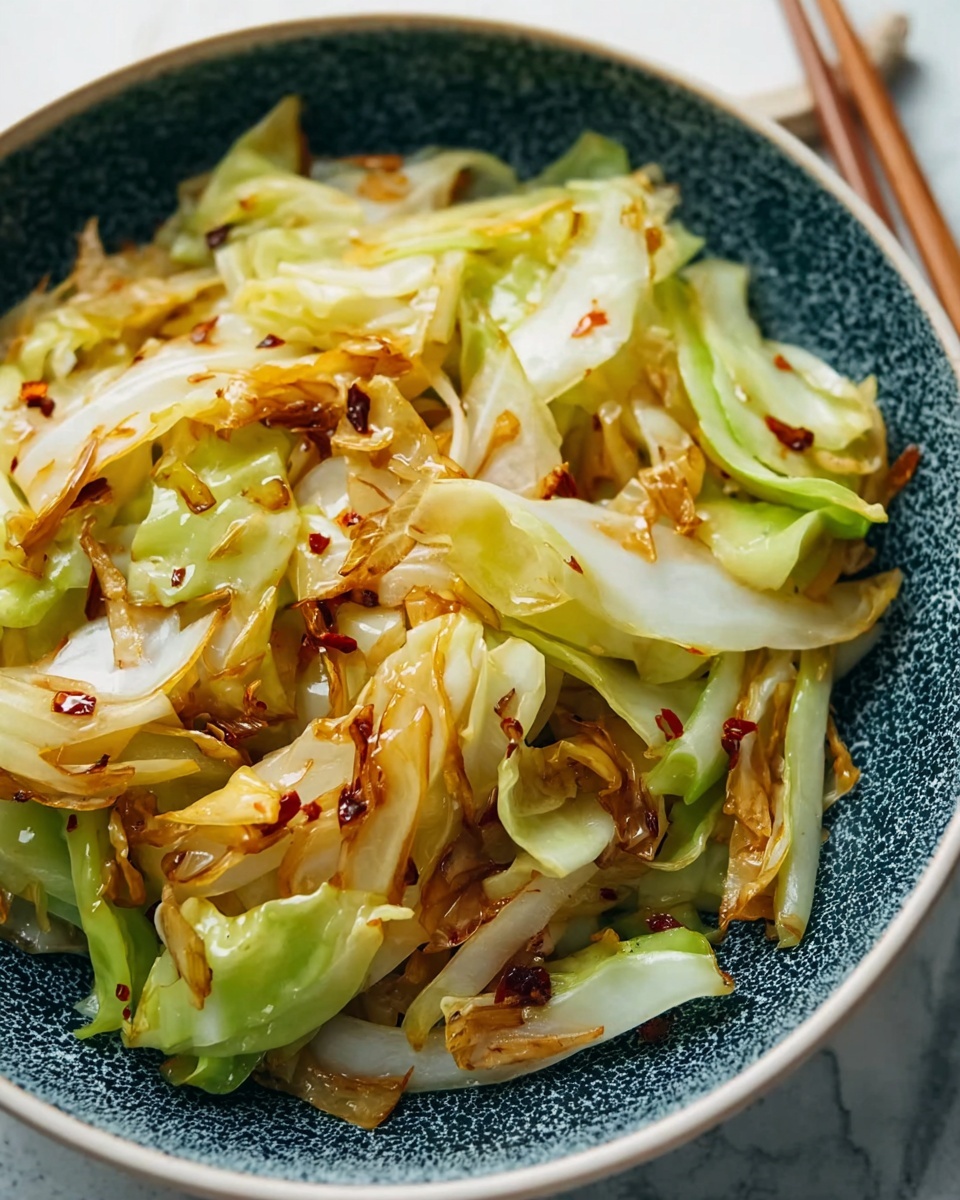
Garnishes
To bring this dish to life, garnish with freshly chopped green onions or even a sprinkle of toasted sesame seeds. These additions not only enhance the presentation but give each serving a delightful crunch and aroma. A drizzle of extra sesame oil right before serving works wonders too.
Side Dishes
Chinese Hot and Sour Cabbage pairs beautifully with fluffy steamed rice, which helps mellow the intense flavors and turns this into a complete meal. For an impressive spread, add sides like simple stir-fried greens, steamed dumplings, or even a bowl of hot miso soup.
Creative Ways to Present
Want to wow your guests? Serve the cabbage in a large shallow bowl or even in hollowed-out small cabbages for a playful presentation. A colorful plate with garnishes carefully sprinkled enhances the dish’s appeal—sometimes the eye truly eats first!
Make Ahead and Storage
Storing Leftovers
Leftover Chinese Hot and Sour Cabbage stores well in an airtight container in the refrigerator for up to 3 days. The flavors actually deepen overnight, making it a tasty next-day lunch or quick dinner component.
Freezing
While freezing is possible, be aware the cabbage may lose some of its crisp texture after thawing. If you do freeze it, store in a freezer-safe container for up to one month and thaw overnight in the fridge before reheating gently.
Reheating
For the best results, reheat leftovers on the stovetop over medium heat with a splash of water or broth to loosen the sauce. Microwave works too, but be sure to cover the dish to keep moisture in and stir halfway through heating.
FAQs
Can I use other types of cabbage for this recipe?
Absolutely! While Taiwanese cabbage offers great texture and mild sweetness, green, savoy, or napa cabbage are excellent alternatives that still soak up the flavors wonderfully.
Is Doubanjiang very spicy? Can I adjust the heat?
Doubanjiang does add a distinct spicy kick and umami flavor. If you prefer less heat, start with one tablespoon and increase gradually to suit your taste. It’s all about making the dish your own.
Can I make this recipe vegan?
Yes! This recipe is naturally vegan, as long as you use soy sauce instead of any fish-based sauces. The rich flavors come from plant-based ingredients, so it’s perfect for a vegan-friendly meal.
What can I substitute for Chinese black vinegar?
If you don’t have black vinegar on hand, rice vinegar is a great mild substitute. For a deeper flavor, add a tiny splash of balsamic vinegar, but use it sparingly to keep the authentic taste.
Can I prepare this dish ahead of time for a party?
Definitely! You can prepare all ingredients in advance and stir-fry the dish shortly before serving. This keeps the cabbage crisp and the flavors bright, making it a fantastic party appetizer or side dish.
Final Thoughts
Chinese Hot and Sour Cabbage: A Quick Flavor-Packed Delight Recipe is one of those gems that feels both comforting and exciting at the same time. It’s speedy enough for busy nights but impressive enough to share with friends. Give it a try—you might just find yourself reaching for this recipe again and again as a wonderful way to enjoy bold, balanced flavors in every bite.
Print
Chinese Hot and Sour Cabbage: A Quick Flavor-Packed Delight Recipe
- Prep Time: 10 minutes
- Cook Time: 15 minutes
- Total Time: 25 minutes
- Yield: 4 servings
- Category: Main Course
- Method: Stir-Frying
- Cuisine: Chinese
- Diet: Gluten Free
Description
This Chinese Hot and Sour Cabbage is a quick and flavorful stir-fry dish that combines the spicy kick of Doubanjiang with the tanginess of Chinese black vinegar, perfectly balanced with savory soy sauce and a touch of sweetness. Tender cabbage is cooked to juicy perfection and served with cooked rice, making a simple yet delightful meal in just 25 minutes.
Ingredients
Oil and Aromatics
- 2 tablespoons Neutral Oil (canola, vegetable, or avocado oil)
- 4 cloves Garlic, finely chopped
Sauces and Seasonings
- 2 tablespoons Doubanjiang (Spicy Bean Sauce)
- 2 tablespoons Chinese Black Vinegar
- 2 tablespoons Soy Sauce (tamari for gluten-free)
- 1 tablespoon Sesame Oil
- 1 teaspoon White Pepper (or black pepper)
- 1 teaspoon Sugar (optional)
Vegetables and Starch
- 1 head Taiwanese Cabbage (or green, savoy, or napa cabbage)
- 1/4 cup Water
- 1 tablespoon Cornstarch (mixed with water to make slurry)
- 1/4 cup Chopped Green Onions (for garnish)
Serving
- 2 cups Cooked Rice
Instructions
- Prepare the Cabbage: Rinse and drain the cabbage well, then chop it into bite-sized pieces to ensure even cooking and easy eating.
- Heat the Oil and Sauté Garlic: In a large wok or skillet, heat 2 tablespoons of neutral oil over medium-high heat. Add the finely chopped garlic and stir-fry until fragrant but not browned, about 30 seconds to 1 minute.
- Add Doubanjiang: Stir in 2 tablespoons of Doubanjiang (spicy bean sauce) and cook for 1 minute to release its flavors into the oil, creating a spicy and savory base.
- Cook the Cabbage: Add the chopped cabbage to the wok and stir-fry for 3-5 minutes until it starts to wilt but retains some crunch. Add 1/4 cup of water to help create steam and soften the cabbage as you stir.
- Season the Dish: Pour in 2 tablespoons of Chinese black vinegar and 2 tablespoons of soy sauce, then add 1 teaspoon of white pepper and 1 teaspoon of sugar. Stir everything to combine thoroughly and balance heat, sourness, and slight sweetness.
- Thicken the Sauce: Mix 1 tablespoon cornstarch with an equal amount of water to make a slurry. Slowly add this slurry to the wok while stirring continuously, allowing the sauce to thicken and coat the cabbage evenly.
- Finish with Sesame Oil and Garnish: Drizzle 1 tablespoon of sesame oil over the cooked cabbage, give it one final stir, then remove from heat. Sprinkle 1/4 cup chopped green onions on top for a fresh, vibrant finish.
- Serve: Spoon the hot and sour cabbage over or alongside 2 cups of cooked rice to enjoy a comforting, flavorful meal that’s ready in under 30 minutes.
Notes
- Doubanjiang is essential for authentic flavor; use a good quality brand for best results.
- Black vinegar adds a distinct tanginess, but rice vinegar can be used for a milder version.
- Adjust the sugar level to taste, or omit if you prefer less sweetness.
- Chop the green onions just before serving to maintain their fresh crunch.
- The dish is naturally gluten-free when using tamari instead of soy sauce.

